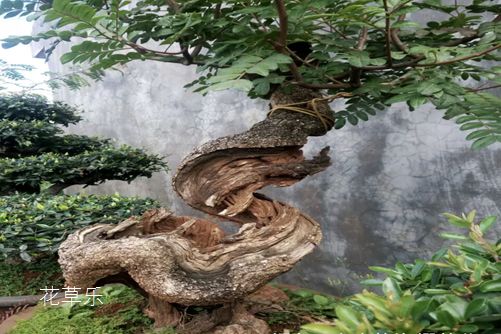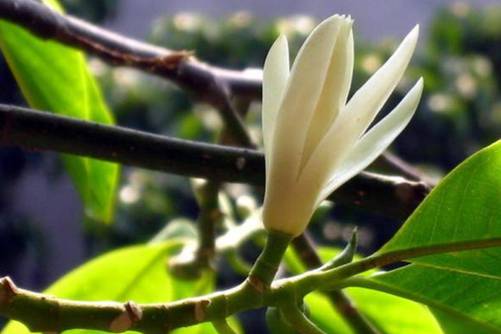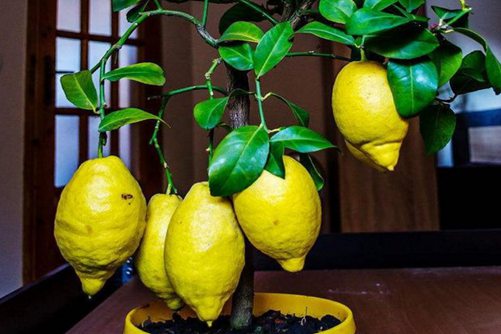How to raise fragrant wood? So that the aroma overflowed and even the mosquitoes dared not fly into the yard.
Fragrant wood can also be called incense leaf, fine leaf, regular wood, Lacqueraceae Coptis shrub or small tree mosquito repellent plant, which mainly grows in the dry and hot valleys of central and northern Yunnan and Sichuan, Guizhou and southwestern Guangxi. Fragrant wood faint fragrance makes people feel at ease, the leaves are green and dense, and the branches are like dragon scales. And the unique smell of fragrant wood can repel mosquitoes. So in recent years, more and more people like to plant fragrant wood as bonsai. As the survival of fragrant wood bonsai is relatively difficult to grow slowly, it usually takes about a year to take root, and it also needs to pay attention to observation after rooting, and it takes 2 to 3 years to determine survival, so the mature pile price of fragrant wood is much higher than that of other tree species. How to raise fragrant wood? So that the aroma is overflowing and even mosquitoes dare not fly into the yard. The following flowers and plants Le Xiaobian and you introduce the cultivation methods of fragrant wood and enjoy the well-maintained fragrant wood bonsai pictures.
How to raise fragrant wood? So that the aroma overflowed and even the mosquitoes dared not fly into the yard.

I. introduction to the culture methods of fragrant wood
The following flowers and grass music for you to share the key maintenance items of fragrant wood under the mountain pile, sealing, entanglement, high cultivation, is the necessary conditions for downhill pile planting of fragrant wood, daily water and fertilizer should not be excessive, and the light is suitable. I hope it can give some reference to bonsai friends who like fragrant wood bonsai, take fewer detours and improve the survival rate.
1. Pile selection: the best time for digging pile planting is from November to March. Due to the low survival rate, we must choose the pile with soil ball, remove the thick root, but keep the fibrous root intact, retain the bifurcated branches, rough stem, miscellaneous branches and so on. Seal the wound with mud or with healing ointment. The selected pile had better be planted on the same day, and it will be difficult to survive for more than 3 days. The whole plant should be covered with film to protect the pile from freezing in winter, and the only thing needed to warm up in February and March in spring is to wrap the film around the branches and keep it moist.
2. Soil: Qingxiangmu prefers slightly acidic and porous soil. It is suggested that coarse river sand + garden soil or laterite + sawdust should be planted at the proportion of about 7:3. After planting, the stump should be irrigated with rooting powder for 2 cycles, and the stump should be sprayed and maintained every day. It usually starts to sprout in a month or so. If the new buds are red, the growth is normal, and if the buds are green, there is not enough light. Some germination period will be delayed, and there is no need to be nervous, indicating that the root system is developing and growing, and the survival rate is higher in the later stage.
3. Temperature: the best growth temperature of fragrant wood is 20-25 ℃, it can survive at-10 ℃, and the cold resistance of seedlings is weak, so it is necessary to do a good job of protection and management when planting in the north, and move to a place of shelter from the cold, but with light.
4, lighting: fragrant wood is a positive plant, like light but can not be long-term direct light, slightly shade-resistant, it is more suitable to be placed in an astigmatic and ventilated environment. Afraid of sun exposure, do a good job of shading in summer, if the long-term shady environment will also affect plant growth.
The sensitivity of fragrant wood to water and fertilizer should be paid attention to.
5. Watering: fragrant wood is resistant to drought and should not be watered too frequently. The new pile is not watered, just spray water every day to keep the pile wet, and the basin soil should not be watered too much. After the survival of the fragrant wood can be watered about once a week, not watered in the rainy season to pay attention to waterlogging, too much water can easily lead to root rot, watering once or twice a week. Keep the soil slightly wet when the weather is dry in spring and summer, and water it once when the soil is dry in autumn and winter.
6. Fertilization: resistant to barren, extensive management, fragrant wood is very sensitive to water and fertilizer, so fertilization must adhere to the principle of frequent application of thin fertilizer. In the growing season from May to September, fertilizer and water can be applied 1-2 times a month. At other times, the growth of plant leaves can be observed. When the growth is not good, a little diluted water fertilizer can be applied properly, and seedlings or newly planted plants will not be fertilized properly. When the plants are fully mature, apply a little base fertilizer when the new leaves germinate, not only nitrogen fertilizer.
Second, why does the fragrant wood lose its leaves?
1. It is normal for the newly bought fragrant wood to have a small amount of yellow leaves. Due to the change of the maintenance environment, the general adaptation period is about half a month to one month.
2. A large number of withered and yellow leaves for a long time may need to consider whether the soil is alkaline, or the problems of water, fertilizer and light. Soil, water and light refer to the introduction of the culture methods of fragrant wood above.
Third, fragrant wood bonsai picture appreciation
Summary:
The plant of fragrant wood can release a very strong pepper flavor, which can purify the air and drive away mosquitoes. However, the range of fragrance release is only in the vicinity of potted plants to ward off mosquitoes. The stronger the fragrant wood fragrance is, the better the mosquito repellent effect will be. So it is not enough for us to rely on a piece of fragrant wood to drive away mosquitoes in the garden. However, if we can plant three fragrant trees around the yard or keep one at the door and one at the windowsill, it must be able to ward off mosquitoes. The stronger the fragrant wood fragrance is, the better the mosquito repellent effect will be. Therefore, the culture method of fragrant wood is very important. Many merchants in the flower and bird market sell pepper wood as fragrant wood, so you should pay attention when you buy it. What's the difference between fragrant wood and pepper wood? just look at it and smell it.
Time: 2019-04-23 Click:
- Prev

The culture methods and matters needing attention of white orchids are easy to do well.
The cultivation methods and matters needing attention of white orchids in order to cultivate white orchids well, the first thing is to choose the basin soil. The soil for breeding white orchids should choose some soil with loose air permeability and good drainage, and the soil had better contain rich humus. Granular soil is more conducive to air permeability and drainage.
- Next

How to grow potted lemons? make these points to make your potted lemons hang fruit all over the branches.
Lemon is also known as lemon, foreign lemon, motherfruit and so on. Small trees, with fewer thorns on branches. The lemon fruit is oval and yellow, and the juice is very sour. The flowering period of lemon is from April to May and the ripening period of fruit is from September to November. Because the taste of lemon is very sour, pregnant women like to eat it very much, which is called motherwort. Lemon juice is succulent and crispy
Related
- Fuxing push coffee new agricultural production and marketing class: lack of small-scale processing plants
- Jujube rice field leisure farm deep ploughing Yilan for five years to create a space for organic food and play
- Nongyu Farm-A trial of organic papaya for brave women with advanced technology
- Four points for attention in the prevention and control of diseases and insect pests of edible fungi
- How to add nutrient solution to Edible Fungi
- Is there any good way to control edible fungus mites?
- Open Inoculation Technology of Edible Fungi
- Is there any clever way to use fertilizer for edible fungus in winter?
- What agents are used to kill the pathogens of edible fungi in the mushroom shed?
- Rapid drying of Edible Fungi

